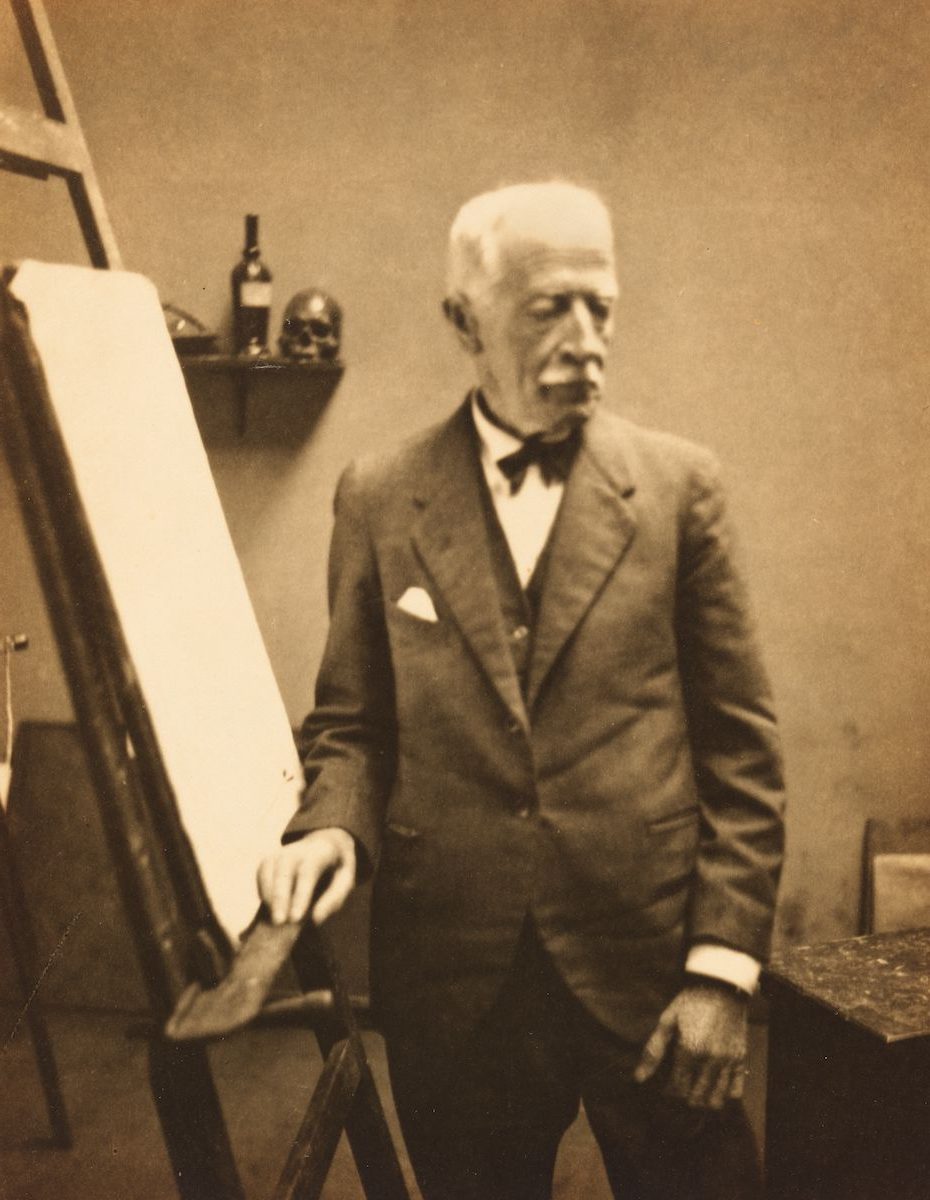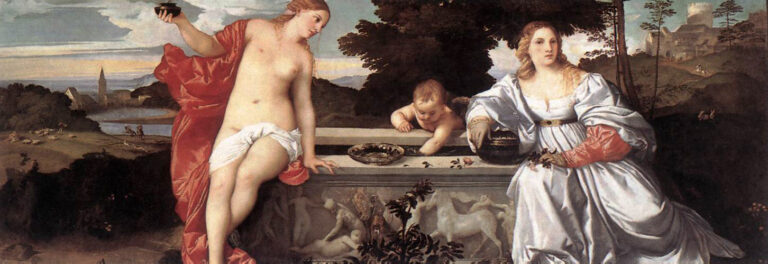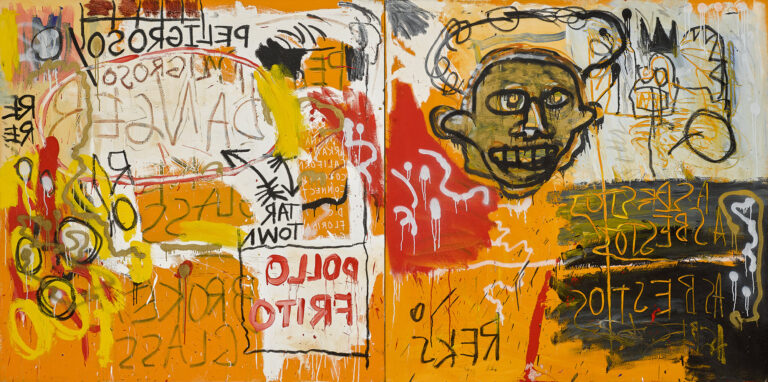Julian Ashton: Painter and Influential Figure in Australian Art
Born: 27 January 1851, Surrey, United Kingdom
Death: 27 April 1942, Bondi, Australia
Art Movement: Impressionism
Nationality: Australian
Institution: West London School of Art and Académie Julian, Paris
Julian Ashton: Painter and Influential Figure in Australian Art
Early Life and Education
Julian Rossi Ashton was born in 1851 in Addlestone, Surrey, United Kingdom. His early years shaped his artistic path and laid the foundation for his future career in Australia.
Journey from Addlestone to Australia
Julian Ashton grew up in a family with artistic ties. His father was an amateur painter from America. His mother came from a diplomatic background.
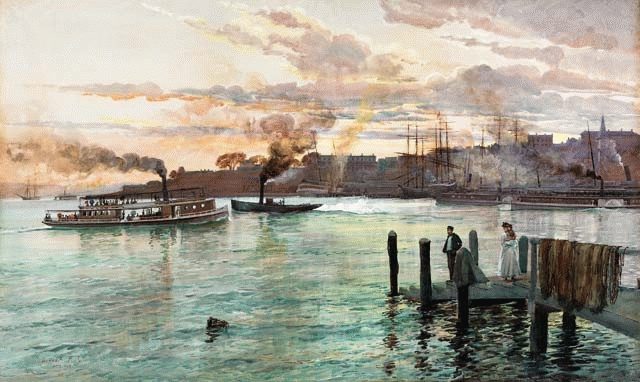
Circular Quay, Sydney (1888) by Julian Ashton
As a young man, Ashton studied at the West London School of Art. This school gave him his first formal art training.
In the 1870s, Ashton made the big move to Australia. He settled in Melbourne at first. This change of place would mark the start of his long career in Australian art.
Influence of European Art Movements
Ashton’s art education didn’t stop in England. He later studied at the Academie Julian in Paris. This school was known for its focus on drawing skills.
European art movements left a mark on Ashton’s style. He was drawn to Contemporary French Realism and the Barbizon School. These styles taught him to paint outdoors and capture real-life scenes.
Ashton brought these ideas with him to Australia. He became known as an English-born Australian artist who mixed European methods with Australian subjects.
Artistic Career and Contributions
Julian Ashton made lasting impacts on Australian art through his teaching, advocacy, and artistic works. He shaped a generation of painters and helped establish a uniquely Australian style.


Founding the Julian Ashton Art School
Julian Ashton started his art school in Sydney in 1890. It became one of Australia’s most important art schools. Many famous Australian artists studied there.
The school taught students to paint outdoors. This was called “en plein air” painting. Ashton believed it was important to capture natural light and landscapes.
He encouraged students to develop their own styles. The school helped create a distinctly Australian approach to art.
Australian Impressionist Movement
Ashton played a key role in the Australian Impressionist movement. He supported the artists of the Heidelberg School. This group focused on painting Australian landscapes and life.
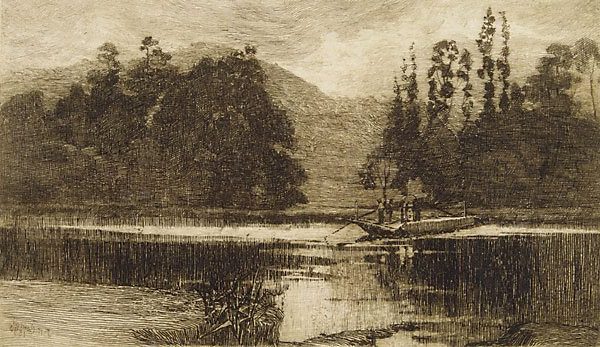
The Ferry (1893) by Julian Ashton
He organized the 1898 Exhibition of Australian Art in London. This show introduced Australian Impressionism to an international audience.
Ashton’s own paintings used Impressionist techniques. He captured the unique light and colors of the Australian landscape.
Impact on Australian Art Culture
As a teacher and leader, Ashton shaped Australian art for over 50 years. He pushed for more support of local artists and subjects.
Ashton served on the board of the Art Gallery of New South Wales. He used this position to promote Australian art and artists.
He also wrote about art for newspapers and magazines. This helped educate the public about art and raise its profile in Australia.
Notable Works
Some of Ashton’s best-known paintings include:

Ashton’s Evening, Merri Creek (1882) by Julian Ashton
- “Evening, Merri Creek” (1882)
- “A Solitary Ramble” (1888)
- “The Prospector” (1889)
These works show his skill at capturing Australian landscapes and people. They blend French Realism with Impressionist techniques.
Ashton also created illustrations for the Illustrated Australian News. His drawings helped shape how Australians saw their country.
Teaching and Legacy
Julian Ashton made a huge impact on Australian art through his teaching and the art school he founded. He trained many important artists and helped shape the direction of Australian painting in the late 19th and early 20th centuries.
Prominent Students
William Dobell, John Olsen, and Brett Whiteley were some of Ashton’s most famous students. These artists went on to become leading figures in Australian art.
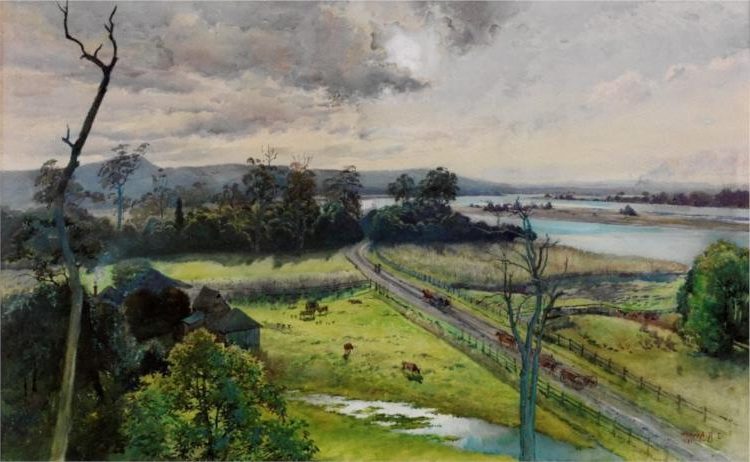
Shoalhaven River, Junction with Broughton Creek, New South Wales (1891)
George Lambert and Nora Heysen also studied under Ashton. His son Howard Ashton and John Passmore were other notable pupils.
Ashton taught his students to paint outdoors and capture local scenes. This approach influenced the Heidelberg School of Australian Impressionism.
Art School in Sydney’s Influence
Ashton founded his art school in Sydney in 1890. It became a key center for art education in Australia.
The school taught drawing and painting skills. It also pushed students to develop their own styles.
Many graduates went on to have successful art careers. The school helped grow Australia’s art scene. It trained both professional artists and art lovers.
Ashton’s school is still open today, carrying on his teaching methods.
Final Years and Memorial
Ashton kept teaching into his old age. He was active in Sydney’s art world as president of the Art Society of New South Wales.

Boatman on the Hawkesbury River, at Cole and Candle Creek, near Akuna Bay (1883)
Ashton also worked as a writer, etcher, and illustrator. He died in 1942 at age 91.
A memorial service was held at Northern Suburbs Crematorium. Ashton left a lasting mark on Australian art through his students and school. His push for a distinctly Australian style of painting shaped the country’s art for decades to come.
Frequently Asked Questions
Julian Ashton was a key figure in Australian art history. He made important contributions as a painter and teacher.
What is Julian Ashton known for in the art world?
Julian Ashton was an English-Australian painter active in the late 19th and early 20th centuries. He was known for painting outdoors, called plein air painting.
Ashton helped shape the Impressionist movement in Australia. His style had a big impact on other artists of his time.
How did the Julian Ashton Art School contribute to Australian art?
Julian Ashton started his art school in Sydney in 1890. It became an important place for training new artists in Australia.
The school taught students to paint local scenes and capture Australian light and landscapes. This helped develop a unique Australian style of art.
Can you name some of the notable students taught by Julian Ashton?
Some well-known artists studied under Julian Ashton. These included Charles Conder and Tom Roberts.
Both Conder and Roberts went on to become major figures in Australian art. They helped define the Impressionist style in Australia.
What was the impact of Julian Ashton on the Australian art scene?
Ashton played a big role in shaping Australian art. He pushed for artists to paint local subjects and scenes.
His work and teaching helped create the Heidelberg School movement. This was a key part of Australian Impressionism.
How did Julian Ashton’s approach to teaching art influence his students?
Ashton taught his students to paint outdoors. He wanted them to capture the unique light and colors of Australia.
This style of teaching helped his students develop their own ways of seeing and painting the Australian landscape.
What are some significant works of art created by Julian Ashton?
One of Ashton’s notable paintings is “Mist on the creek”. It’s now in the collection of a major Australian museum.
Ashton also painted many portraits and landscapes. His work often showed Australian scenes and people.


